The last British two-man light tank
The Mk.IV was a new model in the series of Vickers light tanks. This already comprised of more or less experimental and short series vehicles, the Mk. I to III. For the next one Vickers planned a brand new hull design, roomier, a simpler wheeltrain, as well as a sturdier chassis. It had been planned, at first, for colonial duty in India, and, at the same time, as a "universal model", which could be mass-produced for export. But it would only be a stopgap model before the first British light three-man tank, the Mk.V, ultimately leading to the real-mass-produced Vickers Light Tank of the war, the Mk.VI.Design: The A4E19 (1931)
The design resulting from the Vickers' studies reminds of the Mk.II, but the chassis was left with two Hortsmann spring suspension (in "quad scissors") front drive sprockets and no idlers. However, it was decided to abandon the guide wheels and supporting rollers. Such a move gave several advantages. It reduced the length of the tank, increased seat track mover and facilitated construction of the chassis as a whole. The only serious shortcoming observed later was somewhat poorer mobility, compared with earlier versions.Much of the suspension housing was redesigned to fit the future export Vickers Light M1933. The nose bow used a solid armor plate set at a large angle of inclination, instead of two joined plates. On the right was placed a 6-cylinder gasoline Meadows ETS (giving 88 hp), and the transmission unit behind. On the left was located the driver's seat, with a small armored superstructure. The fighting compartment occupied the middle of the hull. The turret was placed above it, offset to the right. It was of hexagonal shape, relatively small, housing a single cal.303 (7.7 mm) liquid-cooled Vickers standard machine gun. Compared with the Mk. III, the hull was 6.1 in (15.4 cm) shorter and 7.8 in (20 cm) wider. The tank was designated A4E19, Light Tank Mk II Indian Pattern No.1 and L2E1.
However it appeared that battlefield awareness in combat situation was severely limited. The driver saw the terrain through a thin bulletproof glass observation slit, awkwardly located in the hatch. The tank commander could use only the optical machine-gun sight, set in the turret. On the march he used to stand out of the open hatch, leaning out of it on the belt. Trials began in 1931, the prototype performing well. At a fighting weight of 3400 kg, it developed a maximum road speed 58 km/h (36 mph) and had comparable crossing abilities to the Mk.III. At the same time, the military commission noted a number of shortcomings that prevented its adoption into service, even for colonial duty.
The A4E20, production model (1933)
The next prototype A4E20, numbered MT7984 (or Light Tank Mk II Indian Pattern No.1/L2E2), had a slightly modified body. The sights were improved, with new slits at right angles, and the design of the exhaust pipe and side niches was changed. The most important innovation was the standardized four-sided tower of increased size, protected by 9 mm (0.35 in) of armor. Elevation for the machine gun was raised to -10 to +37 degrees. A water tank was mounted just under the roof, to cool down the machine gun. This new experimental model was demonstrated once more to the RTC, which in 1933 decided to conclude a contract to produce a small batch under the ordnance designation Light Tank Mk.IV.Later, after field experiences, serial machines were fitted with a return roller on both sides and a modernized turret traverse system, although still carried out using a flywheel with reduction - five turns made for a complete revolution. Maximum protection was now 12 mm (0.47 in) on the chassis nose glacis. The engine was upgraded to the Meadows ESTE, giving 88 hp.
Production lasted from 1934 to 1935, but was discontinued and eventually stopped because of several issues. The attempt to simplify the design had reduced its driving performance. A higher hull and heavier turret meant the gravity center was higher up, making the tank much more unstable. In addition, the Vickers machine gun was already clearly inadequate. Unfortunately, at that time, the Besa 13 mm (0.51 in) was not ready yet, and would have probably increased the stability problem. Only 34 rolled off the line.
The Light Tank Mark IV in action
The Light Tank Mk.IVs were actively used for training purposes in the UK. However, it is believed that some of these were sent for advanced field training exercises in France in 1940, in the BEF, as by summer that year several were reported captured by German troops. In Wehrmacht service, they were designated Leichter Panzerkampfwagen Mk.IV 734(e). Their fate is unknown, but they probably served for training as well. None seem to have been sent in Libya or India. The colonial version was dropped in the meantime. Only one has survived to this day, now on static display at the Bovington Tank Museum.Links
About the Vickers light Tank Mark IV on WikipediaThe Mk.IV on WWIIVehicles
Vickers Light Mk.IV specifications |
|
| Dimensions (L-w-h) | 11ft 3in x 6ft 7in x 6ft 9in (3.45 x 2.05 x 2.12 m) |
| Total weight, battle ready | 3.32 tons (9520 lbs) |
| Crew | 2 (commander/gunner, driver) |
| Propulsion | Meadows ESTE 6-cyl gasoline, 88 hp (65.64 kW) |
| Speed (road/off-road) | 36/27 mph (58/43 km/h) |
| Max operational Range | 130 miles (210 km) |
| Armament | 1x Vickers cal.303 (7.7 mm) machine gun, 2000 rounds |
| Armor | Glacis nose 12 mm, 8 mm sides & turret, 5 mm top-bottom (0.45/0.31/0.2 in) |
| Total production | 34 |
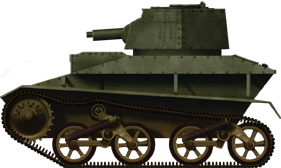
A4E19 prototype.
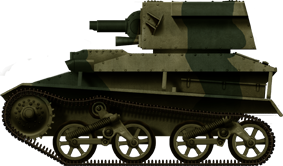
Light Mk.IV series, Great Britain, 1939.
Gallery
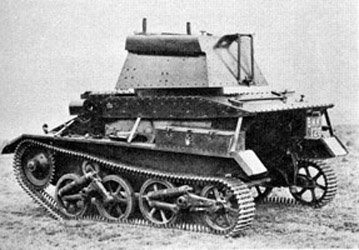
Rear view of a production Mk. IV, fully equipped with mudguards, additional storage, and searchlights. The Vickers Mk. IV was conceived in 1931 with mass production in mind, both for export and local needs. It proved limited with its two-man crew and simple machine gun, and was unstable. Production will lead to the excellent Mk .VI via the Mk. V.
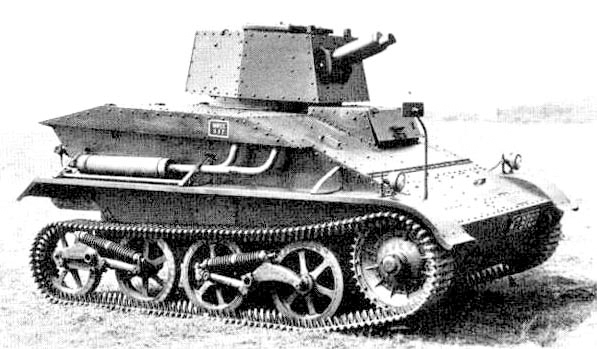
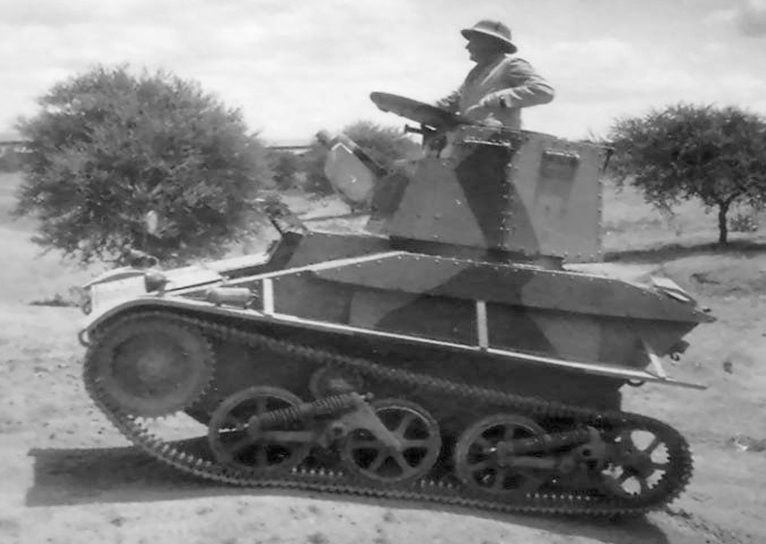
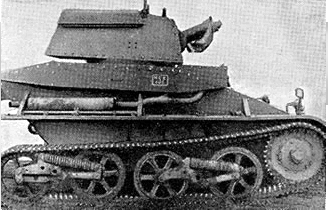
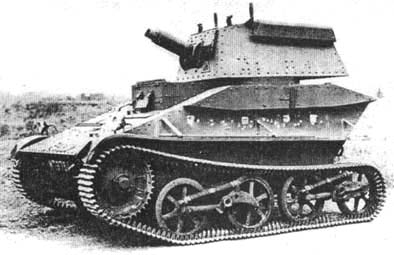
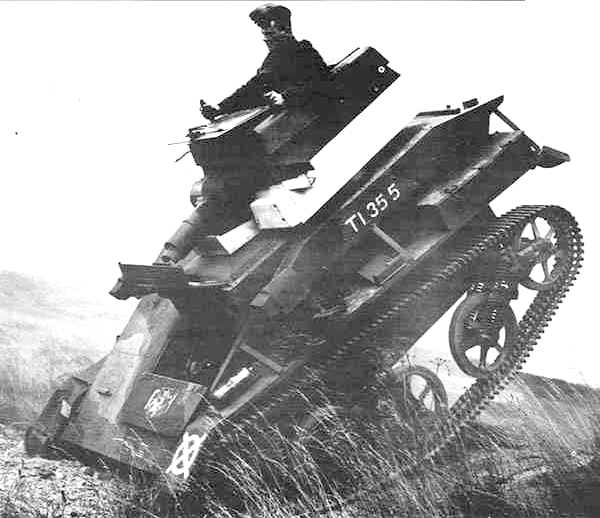

WW2 Tanks




























WW2 tanks posters

All Tiger tanks liveries.

Panther liveries and variants

WW2 Armour - All tanks











Tanks aces and single tanks series

Find more there

Museums, Movies, Books & Games
The Tanks and Armor in pop culture
Tanks and armored vehicles in general are only really grasped when seen first person: The mass, the scale, it's all there. Explore also the way tanks were covered in the movie industry, in books and in video games.Movies:
Best tanks movie on warhistoryonline.com
On imdb.com
On bestsimilar.com/
miltours.com
liveabout.com/
watchmojo.com
Video Games:
pcgamesn.com
historyhit.com
levvvel.com
vg247.com/best-tank-games
mmobomb.com/
alienwarearena.com

